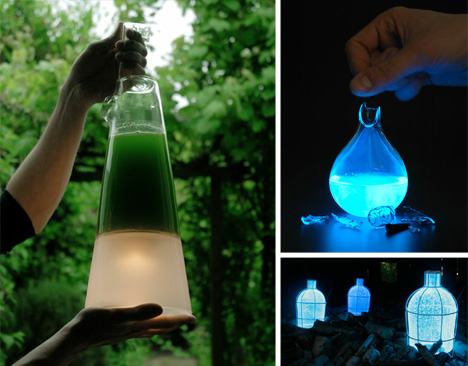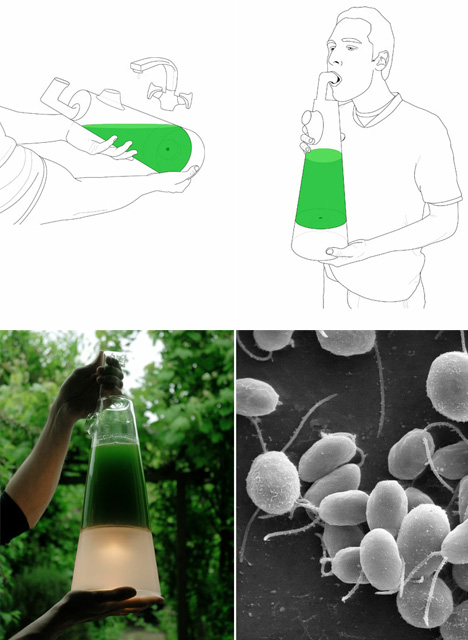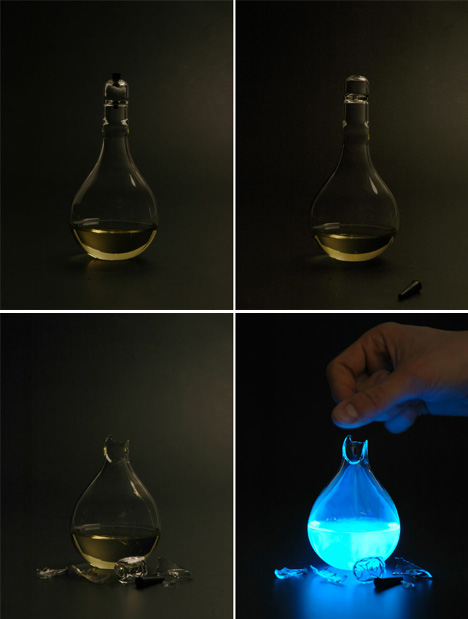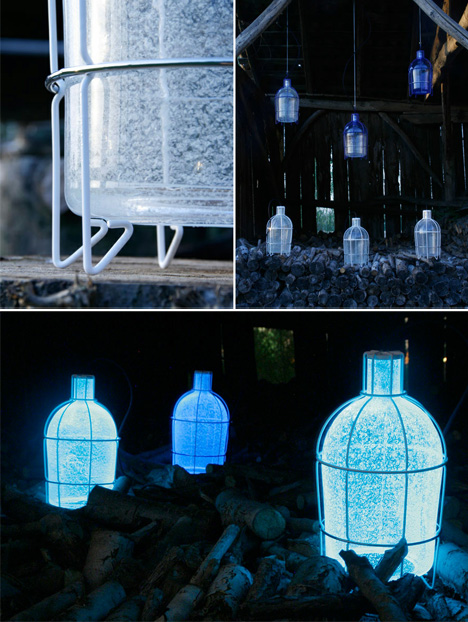Potential energy is all around us … not to mention in us as well. This set of of experimental projects by Mike Thomson utilizes power sourced by everything from tiny chloroplasts to simple human exhalations and even painful exsanguinations.
His Blood Lamp is what you fear: a light powered by your own precious, red-running internal source of nutrient transportation. “For the lamp to work one breaks the top off, dissolves the powder, and uses their own blood to power a simple light.”
“By creating a lamp that can only be used once,” not to mention requiring you to cut yourself and supply fuel, “the user must consider when light is needed the most.”
A new and slightly less-scary idea is the Latro Lamp, titled after the Latin word for “thief” as it “steals” energy from algae to run. This living, breathing product is also powered in part by human exhalations (or rather: their carbon dioxide (CO2) contributions). To avoid algae malnourishment, special sensors prevent their power from being sapped when they are low on energy for light.
“In 2010, scientists from Yansei and Stanford University” inserted electrodes “into the photosynthesising organs – chloroplasts – of algal cells, thus managing to draw a small electrical current from algae during photosynthesis. As advances in nanotechnology lead to increasingly energy efficient products, plant life such as algae will become attractive sources for tapping energy.”
A third and most recent project by Thomson takes another step toward practical applications of light. The Trap Light uses “photoluminescent pigments to capture escaping light [and convert] waste energy back into visible light.” In collaboration with Gionata Gatto, Mike worked with a special glass blowing technique to “embed [these] pigments into the body of the lamp.”



